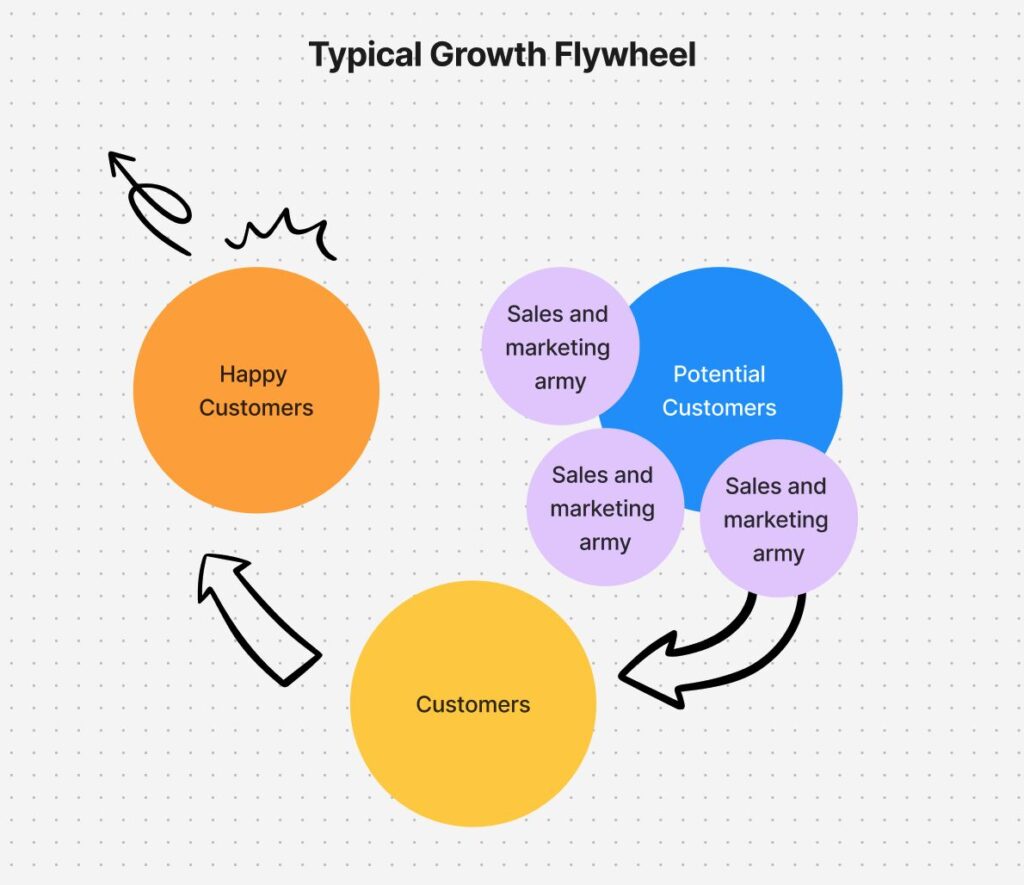Collect Email Addresses from Website Visitors for Remarketing


Having worked in marketing for more than 15 years, I've seen dozens to hundreds of different websites and campaigns.
One thing has become clear:
Try to get an email address from every website visitor
Emails Beat Cookies
GDPR and privacy updates from browser manufacturers have meant that it is no longer possible to automatically track and retarget marketing to website visitors. Cookies are simply not enough.
Email, on the other hand, remains one of the strongest personal identifiers. And best of all - it's your data.
Email marketing is not dead - it has changed. If you're wondering whether you should collect emails even if you don't have a newsletter, then I'll tell you that yes, you should.
Email Addresses in Digital Marketing
- An email is a unique identifier. Google, Meta, TikTok, LinkedIn - they all link emails to users.
- If you receive an email from a (potential) customer, you can retarget your advertising more accurately and effectively.
- You get the chance to nurture customer relationships. The purchase doesn't necessarily happen today, but it can take place next week, next month, or next year.
Only 2-4% of visitors convert immediately. But 100% may become customers later on.
Why Is Email so Valuable?
An email address is not just a contact. It is the key to many things:
- Target advertising on Meta, Google and LinkedIn platforms
- Build efficient email automation (e.g. cart abandonment)
- Identify and enrich B2B contacts with email domains
- Send relevant content and increase lifetime customer value
Email connects the user to a number of different services. It allows marketers to work smarter - now and in the future.
But... we don't have a newsletter?
Collecting emails doesn't mean you have to spam every week with newsletters.
It's about building a valuable register - a dedicated audience that you can connect with when it really matters.
If you are already driving traffic to your website with paid advertising, ask yourself: Can you afford not to collect email addresses from even part of this audience?
REMA and RETA - what do they mean?
REMA = Remarketing
RETA = Retargeting
The two terms are often confused and for good reason. They mean almost the same thing, and are often used synonymously.
Here are some practical examples to clarify.
REMA = Remarketing
Goal: Keep in touch with those who have already engaged with your brand.
Example of REMA:
- The customer has visited your website or left an email.
- They will then be sent reminders, offers or newsletters by email.
- Can also include e.g. shopping cart abandonment automations.
Remarketing is therefore often associated with remarketing based more on email and CRM data.
RETA = Retargeting
Goal: Show ads to people who have visited your site or used your app - but have not yet converted.
An example of RETA:
- The user visits your landing page, but does not request a bid.
- Then she sees an ad on Facebook: 'Forgot something? See what others are saying about us!"
- He clicks on the ad and returns to the site - this time converting.
Retargeting is therefore more related to advertising platforms such as Meta (Facebook, Instagram), Google, LinkedIn, etc.
→ Cookies, pixels and tags are used.
Why are REMA and RETA important?
- Only 2-4% of visitors take the desired action (buy, ask for a quote) immediately.
- REMA and RETA will help you reach them again.
Summary of REMA and RETA
| Term | Channel | Objective | Example |
|---|---|---|---|
| REMA | Email, CRM | Re-approach a known visitor | Cart reminder by email |
| RETA | Advertising campaign | Advertising for those who already visited | Facebook ad for a visitor to the page |
What are lookalike audiences?
Lookalike audiences in advertising means taking an existing audience - for example, a customer register or email list - and using it to build a new audience with advertising platforms that resembles the original as closely as possible.
Think about it this way: if your best customers are 35-year-old urban running enthusiasts who regularly shop online - why not look for more just like them?
How does the lookalike audience work in practice?
- You have a list of existing customers
For example: bought products, left their contact details, subscribed to a newsletter. - Download this list to your advertising platform
- Advertising platform analyses the list
It compares email addresses, phone numbers and other identifiers with user behaviour, demographics, interests, etc. - The platform creates a new audience that mirrors the original
→ This is the "lookalike audience" - people who are not yet your customers, but resemble those who have already converted.
Why are lookalike audiences effective?
- More precise targeting: instead of using an ice-cold target audience for your ads, you can target your message to people with the right potential.
- Better ROI: Because the audience is already warm and similar to previous customers, advertising money is not wasted.
- Scalability: if you have a small but high-quality customer base, you can grow it effectively with mirror audiences - without having to know everything about the characteristics of your target group.
An example of the use of a lookalike audience: a sportswear online store
- Collect emails from those who have subscribed to the "Runner's Guide"
- You upload the list to Meta Business Manager
- Meta creates a mirror audience of users with similar interests and behaviour
- You're advertising to a new audience: 'New spring sneakers - designed for marathon training'
The result: a new audience that is more likely to be interested in your product than a completely random Facebook user.
Bonus tip: Combine lookalike audiences and remarketing
Audiences and remarketing (REMA & RETA) go hand in hand. While remarketing brings back users who have already visited, mirror audiences bring in new, similar users.
To recap:
- REMA/RETA = Return to those who already took an interest
- Mirror audience = Find more just like you
"Subscribe to our newsletter" is not enough - Provide Value
To be honest: no one is interested in your monthly newsletter. Especially if your company is not a well-known brand like Nike or Apple.
A better way? Give something that the visitor will actually benefit from. For example:
- Downloadable guide ("5 ways to save on renovation")
- Test or calculator ("Calculate the cost of a kitchen renovation")
- Offer a small discount code ("Subscribe to our newsletter and get -10% on your first purchase")
- Courses, training programmes or mini-coaching
This is a fair deal. You get an email and the customer gets something valuable. Remember, this is a trade-off, not a license to spam emails.
Think of Your Website as a Grocery Store
Companies invest in advertising, SEO, website design... But not collecting emails?
It's like a grocery store, where the customer can walk past the shelves straight out to the checkout without any temptation to buy.
Think about how much a click costs (often €0.5-1.5, but the price can be as high as €20-30 for competitive terms) - do you really want this traffic to just go away without a trace?
Think for a moment about how carefully each grocery store is designed:
- The first area is the colourful and filled with fresh fruit and veggies - it gives the impression of quality and makes you want to stop.
- The shelves are arranged so that the most popular products are conveniently at eye level.
- The whole arsenal of impulse shopping is waiting next to the checkout: chocolate bars, packets of cans, energy drinks. Why? Because it works.
Now let's translate this into the language of the website:
Optimise your website elements for conversion
Every element of a website should be thought through with the same logic as the shelves in a grocery store.
How do you maximise what you get out of that customer once they walk through the door - i.e. come to your site?
If you're spending money on advertising, search engine optimisation, AI search optimization, content marketing or just having someone maintain and update your website - why not make sure you're getting the most out of it?
Social proof is like a customer review on the shelf. It tells you what others think - and it influences your buying decision.
Collecting emails is like offering a loyalty card. Once a customer has given you their details, you can keep in touch, offer them benefits, bring them back - and increase the value of your customer base in the long run.
Why not collect shopping baskets?
Most customers go to the grocery store without a ready-made shopping list. The same is true for website visitors - few come directly to buy. But if a customer is wandering between the shelves and collecting items in a basket, wouldn't it be foolish to let them out without trying to catch them?
If you know who the customer is (e.g. from an email), you can send a reminder: 'Hey, you didn't complete your order - come back!'
Or offer a little incentive: "Get 10% off if you order now."
In an online shop, this is done automatically - but it starts with you capturing the contact details.
Bottom line: if a grocery store is thinking about the order in which to place rolls and loose candy to maximize sales, why not think about where to place the email form and social proof on your site?
Social Proof Increases Conversion
Social proof websites such as reviews, testimonials and customer comments make a business more trustworthy at a glance.
When a visitor comes to the page, they ask themselves, "Can I trust this?"
Social proof says: "Yes you can - see what others say."
Consider a situation where there is no indication on the website that anyone else has used the service. It's a bit like going to a restaurant where there are no customers. You immediately get suspicious.
The data shows that:
- Adding reviews and recommendations to landing pages increases conversions
- Widgets make it easy to test different ways to increase the credibility of your website
If you're already using advertising money, why not use it effectively and make the most of it?

Summary: Don't Let Your Precious Visitors Leave
- Social proof builds trust in seconds
- Email allows you to stay in touch - and increase sales in the long term
- A website is like a shop - think about how to get the most out of every visitor
- Test first - it costs less than a lost lido
And remember: it doesn't have to be perfect right away - but you have to start somewhere.
You don't have to think everything through. Put up a pop-up, offer something of value and see what happens. One email can be next month's best lead.
Want to collect emails in a smart and GDPR-compliant way? Trustmary's widgets do this for you.
You can add them to your website in minutes and start collecting emails immediately.
A website is an expensive investment, make the most of that investment. This is especially true for the more traditional industries.
Digital marketing for construction companies has become more focused on building trust directly on the website. Every other industry should get inspired by how home renovation businesses build trust.
Get inspired by digital marketing by solar companies and take notes from how to grow your HVAC business.